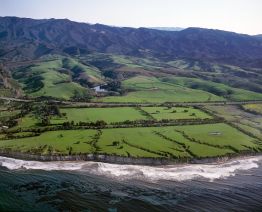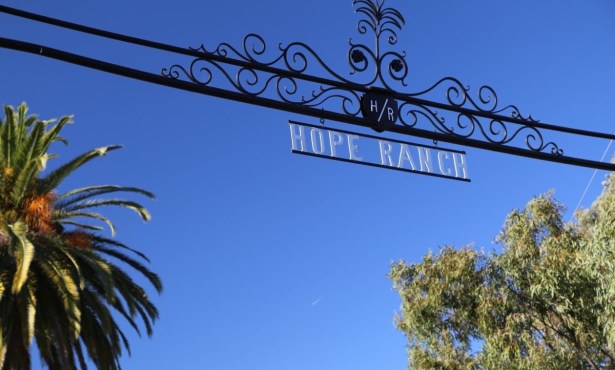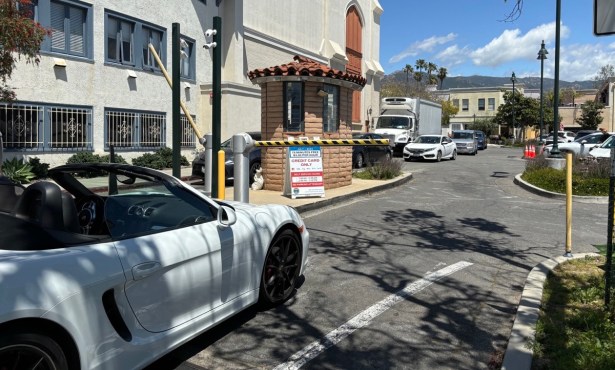Battle for Naples Begins Sooner than Expected
Debate Over Controversial Gaviota Coast Development Begins One Week Earlier than Expected at Santa Barbara County Board of Supervisors

The debate over the fate of Naples was not meant to begin until next week at the Santa Barbara County Board of Supervisors. But after the results of a semi-secret, closed-door supervisor session on the subject were read into the record Tuesday morning, the fireworks began in earnest several days ahead of schedule.
Outraged by the supervisors’ decision this week – via the standard-issue three North County to two South Coast votes – to amend the language of a longstanding agreement betwixt the county and hopeful Naples conqueror Matt Osgood, opponents of the controversial plan to put 72 luxury homes at the easternmost gate of the Gaviota Coast blasted the supes for everything from bowing to developer demands and failed leadership to possible Brown Act violations and willingly undermining the approval process itself. Testifying before the board, the Environmental Defense Center’s Brian Trautwein summed up Tuesday’s unexpected twist: “The vote this morning represents nothing less than a transparent effort to give away the scenic bluffs at Naples to a developer from Orange County.”

The agreement was first hatched in 2002, when the county – looking to put an end to years of Naples-related litigation, including a state Supreme Court ruling validating the 233 legal lots drawn on an 1888 map -entered into a Memorandum of Understanding (MOU) with Osgood, who acquired the Naples property in 1997. That MOU promised to stop the legal bickering in exchange for the county’s agreement to fairly consider 54 mansions on the property’s 485 acres. In the years since, the MOU has been tweaked to contemplate a hybrid plan that involves the neighboring Dos Pueblos Ranch and features 72 large-scale luxury homes spread over about 4,000 acres, plus public beach access trails and 2,600 acres of preserved open space.
That 72-home project is what received a publicly unpopular thumbs-up from the county’s Planning Commission in August; it remains scheduled for final approval from the Board of Supervisors on October 13, the date that everyone thought the latest battle in the war over Naples would begin. But the first shots were fired this week when, at the request of Osgood, the board chose to meet behind closed doors on October 7 to revisit the language of the 2002 MOU and voted 3-2 to allow for phased construction of the project, a move that the Planning Commission also endorsed with a 3-2 vote. That vote was then announced in Tuesday’s public session.
For the developer, this is a major victory, as it’s long been speculated that the coastal portions of the project will face a decidedly uphill and lengthy battle when they come before the California Coastal Commission. If the project were not split into two, Osgood would have to wait for the 16 bluff-top homes to gain approval before he could break ground on the inland portions of the project, a delay that could potentially last years.
For the preservationists, the surprise attack doesn’t just mean that some development might happen sooner. The real downside, according to attorneys representing the Naples Coalition and the Santa Barbara chapter of Surfrider, is that Tuesday’s vote could jeopardize the public benefits, such as the access trails and agricultural easement.

Discovering the county’s plans to tweak the MOU “by accident” during a California Public Records Act request, Naples Coalition lawyer Marc Chytilo sounded the alarm last week that a potentially damning development was afoot after he found a draft version of the now-official MOU changes. Done without public input or proper environmental review, the changes, in the opinion of Chytilo, create a major and potentially illegal situation that only gets incrementally worse when considered in light of the previously stated positions of the California Coastal Commission and the Schulte family, whose Dos Pueblos Ranch contains much of the modified Naples plan’s open space.
In a letter submitted to the Planning Commission, the Schultes said they reserved the right to back out of the project should the Coastal Commission or the county deny the proposed subdivisions on their property or ask them to provide coastal access or restore Dos Pueblos Creek. Add to this a letter submitted by Coastal Commission staff to the county in January detailing concerns about the lack of creek restoration and proposed subdivisions at Dos Pueblos, and you have the makings of a very messy situation. With Tuesday’s phased-development vote, Chytilo explained that the county could now see Osgood’s inland houses built, yet lose many mitigation measures promised in the original deal.
For his part, Osgood explained this week that his 2002 MOU did in fact include allowances for phased development and that he sought a revision simply as a point of “clarity” due to turnover at the County Counsel’s office in the years since it was executed. “Absolutely it was part of the deal back then,” said Osgood, “and it had to be part of the deal now. If I didn’t get it, I would pull out [of the MOU] and Schulte would pull out too.” As for speculation on the Coastal Commission’s current stance on the project and the potential for it imploding the currently conceived Naples plan, Osgood downplayed the staff letter, saying he suspected it was the work of a “rogue employee” acting without consent and that he “sees no reason for Schulte to want to back out.”



